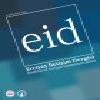Akne Hastalarının Medya Üzerinden Enformasyon Sağlama Ve Edindikleri Bilgileri Uygulama Düzeylerine İlişkin Bir Çalışma
Akne Vulgaris, Sivilce, Sosyal Medya, İnternette AV Tedavisi
A Study on Acne Patients’ Levels of Obtaining Information Through Social Media and Applying These Information
Acne Vulgaris, Pustule, Social Media, AV Treatment on the Internet,
___
- Amichai-Hamburger Y, McKenna KYA. (2006). The Contact Hypothesis Reconsidered: Interacting via the Internet. J Comput Mediat Commun, 11:825-43.
- Armstrong AW KR, Idriss NZ, Larsen LN, Lio PA. (2011). Online video improves clinical outcomes in adults with atopic dermatitis: a randomized controlled trial. J Am Acad Dermatol, 64(3):502-7.
- Atkinson NL, Saperstein SL, Pleis J. (2009). Using the internet for health-related activities: findings from a national probability sample. J Med Internet Res,11(1):4
- Berkman L, Glass T. (2000). Social integration, social networks, social support and health. In: Berkman L, Kawachi I, editors. Social epidemiology. New York: Oxford University Press.Bilgiç, Özlem, Ak, Muharrem, (2011). Akne Vulgaris’li Hastalarda Tamamlayıcı ve Alternatif Tıp Uygulamaları İnönü Üniversitesi Tıp Fakültesi Dergisi;18(2):111-4..
- Cain, J. (2011). Social media in health care: the case for organizational policy and employee education. American Journal of Health-System Pharmacy,68(11), 1036.
- Chou, W. Y. S., Hunt, Y. M., Beckjord, E. B., Moser, R. P., & Hesse, B. W. (2009). Social media use in the United States: implications for health communication.Journal of medical Internet research, 11(4), e48.
- Chretien, K. C., & Kind, T. (2013). Social media and clinical care ethical, professional, and social implications. Circulation, 127(13), 1413-1421.
- Durusoy ve ark. (2010), Akne ve Melasmada Alternatif Tıp Turk J Dermatol; 4: 14-7.
- Eysenbach, G. (2011). The role of social media for patients and consumer health.IMIA Yearbook, 6(1), 131-138.
- Fowler JH, Christakis NA. (2008). Dynamic spread of happiness in a large social network: longitudinal analysis over 20 years in the Framingham Heart Study. BMJ, 337:a2338.
- Hanna, Shannon, Sharma, Jasdeep, Klotz, Jennifer, (2003), Acne vulgaris: More than skin deep. Dermatology Online Journal 9(3): 8
- Hayta, Sibel Berksoy, Yavuz, Göknur Özaydın, Kıncır, Mehmet Fevzi (2000), Akne ve Melasmada Alternatif Tıp, Cumhuriyet Med J 2011; 33: 430-434., Aktan ve ark. 2000, Durusoy ve ark. Turk J Dermatol 2010; 4: 14-7.
- Hayta, Sibel Berksoy, Yavuz, Göknur Özaydın, Kıncır, Mehmet Fevzi, (2011), Anxiety, depression, and nature of acne vulgaris in adolescents Cumhuriyet Med J 2011;.
- Aktan, S., & Özmen, E. (2000)..International journal of dermatology, 39(5), 354-357. , Hawn, C. (2009). Take two aspirin and tweet me in the morning: how Twitter, Facebook, and other social media are reshaping health care. Health affairs,28(2), 361- 368.
- Kaplan AM, Haenlein M. Users of the world, unite! The challenges and opportunities of social media. Business Horizons 2010;53:59-68.
- Kellett, S. C., & Gawkrodger, D. J. (1999). The psychological and emotional impact of acne and the effect of treatment with isotretinoin. British Journal of Dermatology, 140, 273-282.,
- KooJY,SmithLL, (1991), Psychologic aspects ofacne, Pediatr Dermatol. Sep;8(3):185- 8
- Korda, H., & Itani, Z. (2013). Harnessing social media for health promotion and behavior change. Health promotion practice, 14(1), 15-23.
- Latané B. (1981). The psychology of social impact. Am Psychol, 36(4):343-56.
- Lau, A. Y. S., Siek, K. A., Fernandez-Luque, L., Tange, H., Chhanabhai, P., Li, S. Y. W., ... & Eysenbach, G. (2011). The role of social media for patients and consumer health. IMIA Yearbook, 6(1), 131-138.
- Lustria ML, Smith SA, Hinnant CC. (2011). Exploring digital divides: an examination of eHealth technology use in health information seeking, communication and personal health information management in the USA. Health Informatics J, 17(3):224-243.
- Madden, M. Online Video. (2007). July 25, [17 May 2011]; Available from: http:// www. pewinternet.org/~/media//Files/Reports/2007/ PIP_Online_ Video_2007.pdf.pdf.
- Moorhead, S. A., Hazlett, D. E., Harrison, L., Carroll, J. K., Irwin, A., & Hoving, C. (2013). A new dimension of health care: systematic review of the uses, benefits, and limitations of social media for health communication. Journal of medical Internet research, 15(4), e85.
- Okan, U. D. G., Kulaç, M., Rendon, M. (2014), Dermatoloji Polikliniğine Başvuran Hastaların Kozmetik İşlemlere Güncel İlgisi: Bir Anket Çalışması. Dermatoz; 5(1): 1451a1.
- Pirolli P. (2009). An Elementary Social Information Foraging Model. Computer Human Interaction Conference, Boston, MA.
- Ruggiero KJ, Gros DF, McCauley J, de Arellano MA, Danielson CK. (2011). Rural adults’ use of health-related information online: data from a 2006 National Online Health Survey. Telemed J E Health, 17(5):329-334
- Schein, R., Wilson, K., & Keelan, J. E. (2010). Literature review on effectiveness of the use of social media: a report for Peel Public Health. [Region of Peel], Peel Public Health.
- Thackeray, R., Crookston, B. T., & West, J. H. (2013). Correlates of health-related social media use among adults. Journal of medical Internet research,15(1), e21.
- Wen KY, Kreps G, Zhu F, Miller S., (2010). Consumers’ perceptions about and use of the internet for personal health records and health information exchange: analysis of the 2007 Health Information National Trends Survey. J Med Internet Res,12(4):e73
- Yang, C. C., Jiang, L., Yang, H., & Tang, X. (2012). Detecting signals of adverse drug reactions from health consumer contributed content in social media. In Proceedings of ACM SIGKDD Workshop on Health Informatics.
- http://www.instaturkiye.com Erişim Tarihi; 25.08.2016; 14:30
- ISSN: 1308-3198
- Yayın Aralığı: 2
- Başlangıç: 2009
- Yayıncı: Erciyes Üniversitesi İletişim Fakültesi
Film Anlatısında Kahramanın Değişen Özne Konumu: Başkalarının Hayatı Filmi Örneği
Y Kuşağının İnternetten Alışverişe Yönelik Tutumları: Nicel Bir Araştırma
Panoptikon 2.0: Alternatif Medya ve Karşı Gözetim
2000’ler Türk Sineması’nda Aidiyetsiz Kent İstanbul
Nuray YILMAZ, Tuba ÇEVİK ERGİN, Ebru YILMAZ
Eleştirel Söylem Çözümlemesi Bağlamında Haber Metinlerinin İncelenmesi: Pippa Bacca Cinayeti Örneği
Mobil İletişim Çağında Kuşaklararası Koordinasyon Biçimleri
Yeni Medya Gelir Kaynakları ve Türkiye’de Dijital Medya: İş Modelleri, Sorunlar ve Öneriler
